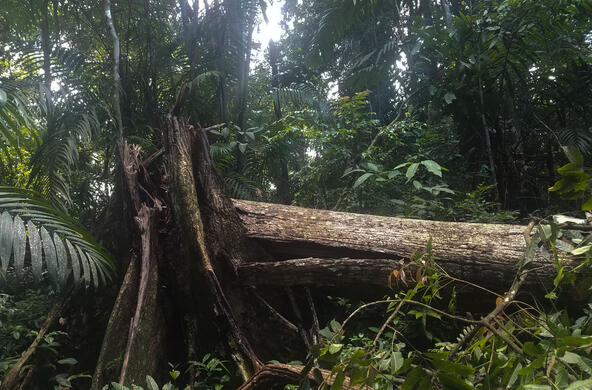As long as the Clean Power Plan is still in place, electric utilities are looking for ways to clean up their carbon dioxide emissions to the atmosphere and prevent global changes in climate. Some utilities are switching to natural gas, which emits lower amounts of carbon dioxide (CO2) per unit of energy generated. However, natural gas is not without its own problems (see Natural gas or coal: It's all about the leak rate).
Humans used firewood for thousands of years, during a period with little change in the concentration of CO2 in the atmosphere. So some utilities are looking toward the burning of wood, also known as biomass or biogenic energy, to generate power. This is an interesting “throw back” to an earlier time when firewood was used widely for heat, light, and early industrial processes. But, there is a reason why we switched to coal, which has greater energy content per unit weight.
It is natural to think that burning firewood would have a minor effect on atmospheric CO2. After all, as trees grow back, they remove CO2 from the atmosphere. Thus, unlike fossil fuels, trees might be regarded as “carbon-neutral.” The regionally moribund forest products industry sees biomass as a way to recreate jobs and profits, and a trove of biomass energy companies has a lot at stake financially.
However, there are several fundamental misunderstandings about the carbon neutrality of biomass. The first is that the CO2 released from the burning of biomass is somehow “different” from the CO2 from fossil fuels. This is not at all true: the CO2 molecule from both sources has identical structure, mixes into the atmosphere with other CO2, and easily circulates from pole to pole and ground to stratosphere during its 3-year residence time in the atmosphere.
The argument that the CO2 from biogenic fuels has no impact on the concentration of atmospheric CO2 is also untrue. When biomass is burned, it emits CO2 immediately. If a lot of it is burned, it emits a lot of CO2. That is why we keep track of tropical deforestation and add its CO2 emissions to the inventories of emissions from various nations. Deforestation currently contributes about 10% to the rising concentrations of CO2 in the atmosphere. In contrast, the uptake of CO2 by regenerating forests is long-term and not guaranteed.
Consider a simple analogy: colleges do not ignore the 4-year costs of educating students for a B.A. degree, with the assumption that, of course, their increased earning power will result in generous contributions to the alumni fund in future years, paying for the up-front costs of their education. The upfront costs are charged as tuition, just as they should be for impacts of CO2 on the Earth’s atmosphere.
We can also reverse the accounting. Suppose I buy a piece of vacant farmland and plant trees, what is known as afforestation. Under the Clean Power Plan, I would get credit for their carbon uptake immediately, measured by changes in the carbon inventory on the land. The carbon uptake would not be discounted by some hypothetical possibility that this tract of forest might later be harvested or burned, putting the CO2 back in the atmosphere.
The easy way to deal with this controversy is to assign the biomass that power plants desire to burn into categories or “bins” with different recovery times. The first bin would include carbon-neutral biomass contributed by the use of grasses, crop residues, and wastes as fuels. These plants would regrow within a year. In the last bin would be mature trees, which would take perhaps 100 years to recover the carbon emitted to the atmosphere from their combustion. A power plant would get lower rewards for switching to wood derived from mature trees.
Knowing the origin of the biomass that is burned should not be difficult; you can’t move biomass more than about 50 miles before the energy it contains is equivalent to the energy needed to haul it. Power plants will obtain their biomass close to home.
The Environmental Protection Agency is currently grappling with this controversy, but it is not rocket science. Forest biomass is not carbon-neutral in a meaningful time frame.
References
Cornwall, W. 2017. The burning question. Science 355: 18-21
Galik, C.S. and R.C. Abt. 2015. Sustainability guidelines and forest market response: An assessment of European Union pellet demand in the southeastern United States. Global Change Bioenergy doi: 10.1111/gcbb.12273
Jonker, J.G.G., M. Junginger, and A. Faaij. 2014. Carbon payback period and carbon offset parity point of wood pellet production in the southeastern United States. Global Change Biology Bioenergy 6: 371-389.
Ocko, I.B, and 8 others. 2017. Unmask temporal trade-offs in climate policy debates. Science 356: 492-493.
Ter-Mikaelian, M.T., S.J. Colombo and J. Chen. 2015. The burning question: Does forest bioenergy reduce carbon emissions? A review of common misconceptions about forest carbon accounting. Journal of Forestry 113: 57-68.







